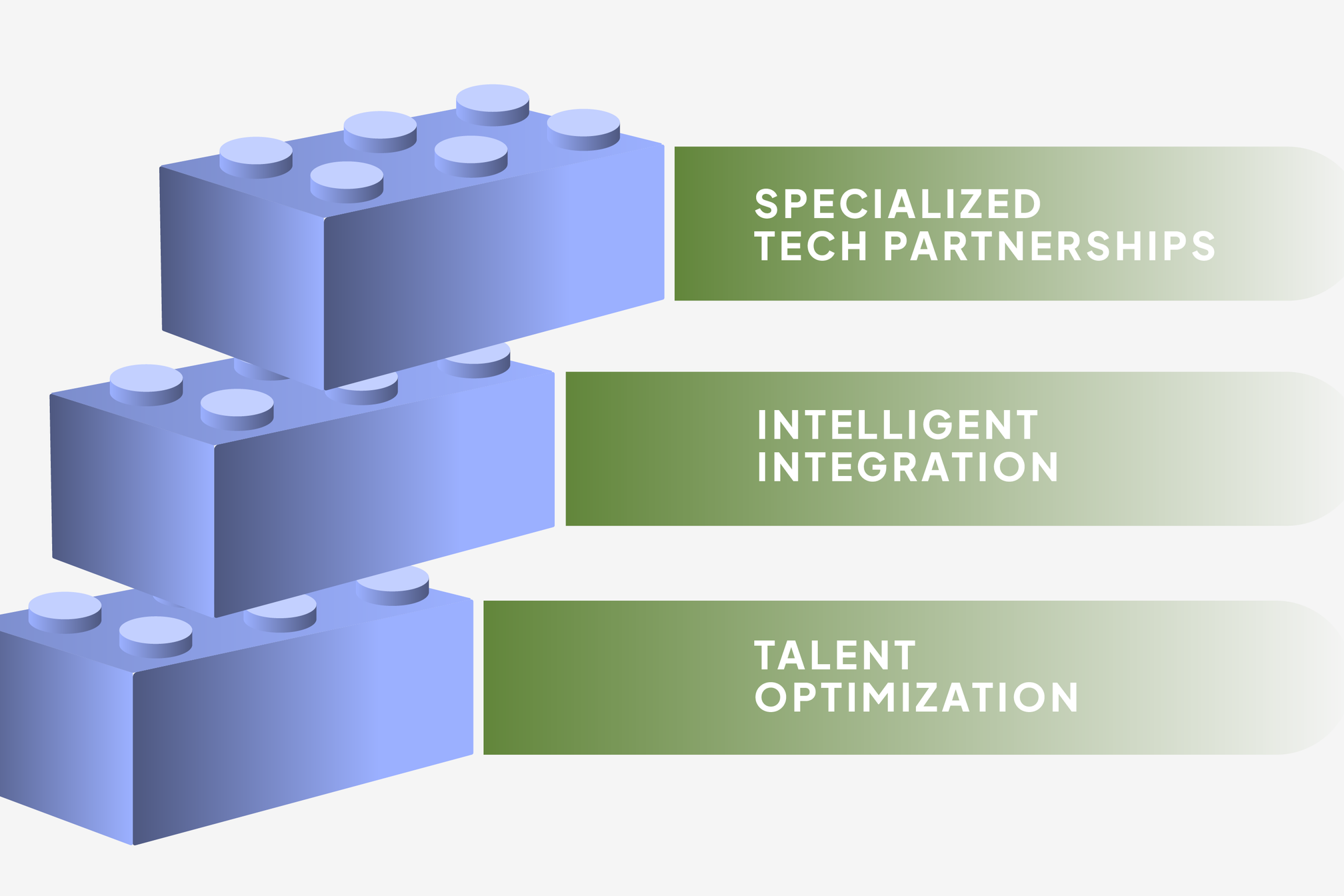Friday, August 29, 2025
Take Control of Your Destiny with Smart Tech Investment


Take Control of Your Destiny with Smart Tech Investment
Independent rehab therapy practices are missing a crucial opportunity to build leverage and create optionality for their future.
Private equity firms are systematically buying up independent practices on the road to consolidation, with a focus on maximizing profit and improving patient care.
Healthcare practices are racing to achieve these outcomes on their own. They’re desperately trying to improve their position before PE firms come knocking. However, spending time embedded in independent practices has shown Indie Health co-founder and CTO Eric deRegt that common cost-cutting strategies, like avoiding new tech, are undermining the leverage they’re trying to build.
deRegt shares that the practices best positioned to negotiate are actually those making aggressive technology investments early on.
“Commitment to investing in technology and AI is going to give independent practices a leg up,” deRegt shares. “Many of the businesses facing consolidation right now are those still using legacy tools.”
Key takeaways:
- Independent rehab practices’ cost-cutting strategies, particularly avoiding tech investment, are undermining their ability to negotiate with PE firms.
- Practices must treat tech as a revenue generator rather than a cost center, recognizing that strategic tech investments create operational efficiencies that translate into increased profitability and negotiating power.
- When approaching tech adoption, practices should focus on building a three-layer tech foundation comprised of specialized tech partnerships, intelligent integration, and talent optimization.
Are you shooting yourself in the foot?
deRegt highlights that decreasing reimbursement rates and rising compliance costs have resulted in razor-thin margins, forcing practices to scrutinize every expense.
“They’ve seen their margins shrink significantly over time, while employees are forced to work harder even though they’re burnt out,” deRegt shares. “Practices are having a lot of difficulty growing their businesses in this environment.”
"They've seen their margins shrink significantly over time."
As a result, many practices respond with predictable cost-cutting measures, like minimizing technology investments. The logic appears sound. Avoiding expensive technologies would allow them to boost their bottom line and reinvest in their practice, granting them the ability to remain independent, sell to private equity on more favorable terms, or explore a variety of other options, such as forging clinical affiliations with health systems or acquiring practices themselves.
But deprioritizing technology actually has the opposite effect.
During deRegt’s visits to practices, he has witnessed them rely on manual workflows, with front-desk staff writing information on pieces of paper during phone calls. Then, they spend a significant amount of time transferring that data into disconnected systems that are 10–15 years old.
These legacy processes create operational inefficiencies that inhibit patient care and contribute to employee burnout and turnover, undermining revenue growth. For example, missed calls lead to lost business, and data entry errors result in issues with collections.
Independent practices think they are improving their hand at the negotiating table by cutting costs. Instead, they are inadvertently dealing all their best cards to PE firms, allowing them to set the terms of the engagement and decide what the future holds.
Take control of your future with a three-layer tech foundation
To take control, rehab therapy practices must treat new technology as a revenue generator, not an overhead expense.
When chosen and implemented properly, these solutions more than pay for themselves. They eliminate operational inefficiencies created by legacy systems, enabling practices to serve more patients, capture revenue manual processes miss, and redirect employees toward growth activities.
“When you automate things that are very manual, you can drive more revenue,” says deRegt. “You may be spending the same or more money on software, but it will be outweighed by this new revenue."
"When you automate things that are very manual, you can drive more revenue."
While struggling practices must accept the terms they are given, profitable practices can negotiate a more favorable deal, choose to remain independent, or go down a different path.
Through his time spent on the ground with independent rehab therapy practices, deRegt has discovered how they must approach tech adoption in their effort to keep their options open. Optionality depends on building a three-layer tech foundation comprised of specialized tech partnerships, intelligent integration, and talent optimization.

Layer 1: Specialized tech partnerships
deRegt urges practices to adopt tools that are purpose-built for healthcare, and ideally their specialty, rather than general-purpose solutions targeting any and all businesses.
With this specialization comes the ability to properly facilitate healthcare’s unique workflows and manage its complex data while heeding compliance requirements — even as they continue to evolve.
Beyond industry expertise, deRegt encourages practices to seek solutions that can be tailored to their particular specialty. For example, prior authorization plays out differently in rehab vs. primary care, making it critical to find solutions that respect the nuances of the process in each space.
Practices should choose partners that demonstrate genuine curiosity about daily operational challenges and can articulate how their solutions address specific pain points.
Layer 2: Intelligent integration
Practices don’t need to overhaul their systems to take advantage of the latest technologies. In fact, doing so could create confusion among employees and lead to costly service disruptions.
Rather than advocating for wholesale system replacement, deRegt recommends that practices identify the highest impact manual processes, like patient intake, and select automation solutions that integrate seamlessly with existing infrastructure to drive operational efficiencies.
Not all automation is created equal. There are three levels: rule-based systems that follow predetermined workflows, partial automation that makes recommendations requiring user guidance, and autonomous systems that handle operations with minimal oversight.
Practices should look for technology partners that understand when different levels of automation are appropriate. While higher levels of automation are helpful for routine processes, tasks linked to regulatory compliance require more careful consideration and oversight.
Discover how to deploy AI at the front desk in our tactical playbook.
Layer 3: Talent optimization
deRegt has observed how technology adoption has become a powerful recruitment tool — one that has become critical to wield as the competition for top talent heats up.
Practices willing to procure solutions to tackle administrative tedium can market themselves as employers committed to professional satisfaction and career development.
The advantage extends beyond recruitment to retention. Technology-forward practices can create positive work environments for existing employees by freeing them up to manage higher-value tasks, like personalizing patient journeys, proactively managing population health, and developing strategic community partnerships. This allows them to grow in their careers, preventing costly turnover and driving growth for the practice.
The choice is yours
When deRegt first started visiting independent rehab therapy practices, he was surprised by what he found. Walking through their day-to-day operations exposed far more manual processes than he anticipated.
However, he’s also made an encouraging discovery. Healthcare professionals respond with genuine excitement when shown industry-specific solutions that directly address their daily frustrations.
The transformative potential of new technology becomes abundantly clear when evaluating administrative workflows. During demonstrations of capabilities like automated call transcription, data extraction, and data entry, practice owners and employees immediately see the value: maximum efficiency drives the profitability they require to stay in control.
With a three-layer tech foundation in place, practices can create optionality. Whether they remain independent, sell to private equity, or take a different route, it will be the result of a choice they made on terms they set themselves.
